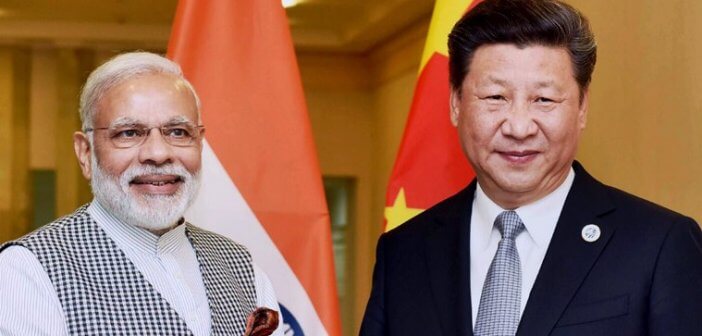Amit Bhanot, Managing Editor, Governance Democracy & Politics Magazine, October Issue
How did India and China, collectively home to more than 35 percent of the world’s people, go from conflict to camaraderie in a matter of 7 days? By August completion, two months into the worst border standoff between India and China in decades, there were whispers of war. But this week, Indian Prime Minister Narendra Modi and Chinese President Xi Jinping joined Russia, South Africa and Brazil in declaring war on Pakistan-based terror groups. What just happened and more importantly can it last?
At this juncture, indications are that China’s aspirations to be a global leader have prevailed over bilateral tensions and the competing ambitions of Asia’s two biggest powers — but not before India outstared China with regard to the Doklam border dispute. Perhaps China have simply misjudged the Doklam incident. For all the talk of China’s salami-slicing territorial expansion, the original decision to construct the road that India objected to may have been taken locally. Also the firmness of India’s response and the disregard it showed for China’s clear demands that it withdraw from Chinese sovereign territory was striking and unprecedented.
Eventually, diplomacy proved to be the ace in India’s hand. Importantly, Narendra Modi indicated he might skip a summit of the BRICS countries that China hosted last weekend, if tensions did not subside. India was able to restore the status quo in Bhutan. Both governments issued different statements, but the road-building party was pulled back by the China and the soldiers were withdrawn by the Indians. There is no denying the fact that firmness of Indian diplomacy and political will has changed the rules of the game in the relations between the two powers. India simply did not blink in the way the Chinese expected it to.
Experts are of the view that economics also played its part. In terms of figures, China is India’s largest trade partner and despite the Doklam crisis, Indian imports from China were up 33 percent in the April-June quarter. Importantly Indian under PM Modi leadership, has now learnt balance its political interests with its economic aspects. Doklam Standoff was the best example of that. Doklam is where muscular politics played out at the same time BRICS was the vehicle for cooperation in economic space. A clear signal has been given to China regarding opportunities forgone in the form of Indian market, if restrictions have been put on Chinese goods, and this trick worked phenomenally well.
At the time of Doklam hostilities, one important revelation was the increasing warmth shared between New Delhi and Washington. The strategic implications were unmistakable, when U.S. President Donald Trump spoke of securing the assistance of India for a reinvigorated effort to stabilize Afghanistan. Part of this association has seen an obvious decline in the relationship between US and Pakistan, but the continued U.S. presence in Afghanistan and increasing friendship with India has geopolitical implications for China’s all-weather friendship with Pakistan.
Despite all this, Xi Jinping heaped quite a bit of praise on Narendra Modi and India, and in a firmly positive speech that made no mention of Doklam, Xi praised the encouraging “development momentum of China-India relations,” heralding cooperative ventures in industry, culture and international organizations. More surprising still, India secured a big concession with the language included in a BRICS statement which made direct mention of Pakistan-based terror groups, previously thought to have been excluded at the insistence of Pakistan’s ally, China.
Yet there are issues to be solved. At the United Nations, China has routinely used its veto to block India’s attempts to get Jaish’s chief, Masood Azhar, designated a global terrorist. The roads being built by the Chinese in areas that India considers sovereign territory in Pakistan-occupied Kashmir will remain a flash point. Just this week, India’s army chief has underlined China’s strategy of “salami slicing and taking over territory gradually” and reiterated the possibility of a two-front war with both Pakistan and China. Considering all this; Will this peace last long?





